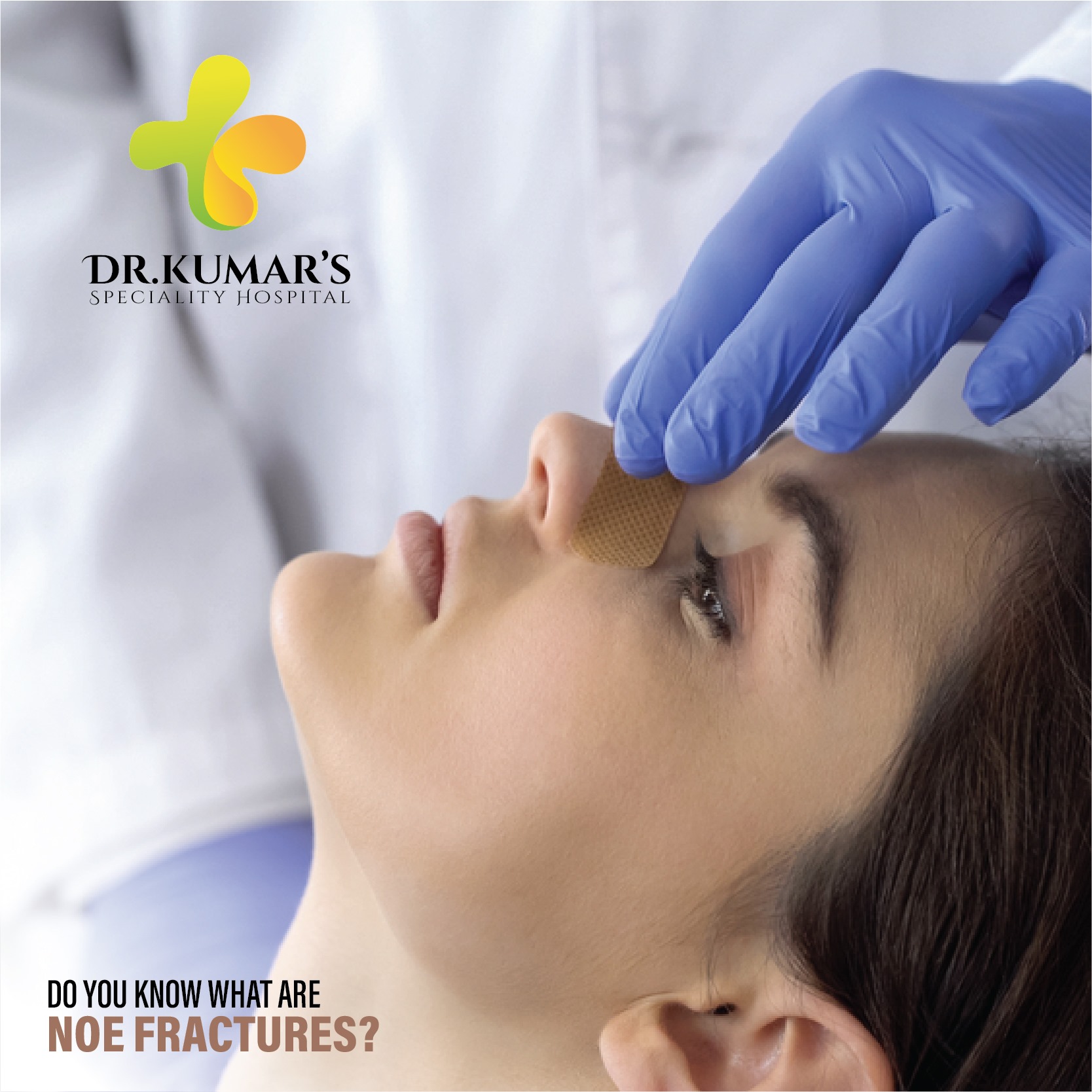
NOE fractures are counted among complex facial fractures and they are called Nasoorbitoethmoid (NOE) fractures. They refer to the anatomical complex involving the nasal, orbital and ethmoid bones of the face. Such fractures occur due to high impact trauma to the nasal region. This causes depression of the nasal bones into the orbital and ethmoid bones.
Though NOE fracture refers to a fracture of bone, it may also involve damage to the blood supply, nerves and other supporting structures of the facial region. The extent of damage is related to the force of impact due to falls, road accidents and contact sports.
Signs and symptoms of NOE
The distinct symptoms depend on what specific damage to the NOE complex has occurred.
The common symptoms are diplopia (double vision), pain in the eye, forehead and nose. This may be accompanied by a burning, itching, or numbness sensation in the forehead region. Other symptoms may include nasal congestion, dizziness and loss of smell.
Physical signs of NOE fracture may include severe nose bleeding, epiphora or overflowing tears indicating blocked tear ducts, eye injury including lens distortion, retinal detachment and vitreous hemorrhage. Leaking of cerebrospinal fluid through the nose will also be observed.
Diagnosis of NOE fracture
NOE fractures need to be diagnosed quickly to reduce long term complications as well as aesthetic deformities. Before NOE fracture assessment, most risk factors like adequate circulation, airway control and breathing will be assessed. Due to the location of the trauma it is always propable for related complications.
What are the treatments?
The number of facial structures involved in the NOE complex, it is one of the most challenging surgical reconstructions.
Due to the many facial structures involved in the NOE complex, repairing an NOE fracture is one of the more challenging surgical reconstructions being performed. Complications related to surgeries to improve NOE fractures mirrors NOE fracture symptoms with the addition of scarring and infection.
Due to the complexity of the surgeries, surgical interventions will usually begin at the base of the skull and the surgeon will work their way towards the mid-face. Early repairs will include realignment and plating before reconstruction of structures like the orbital wall (bones around the eye socket).
Treatments for NOE fractures are very successful, but they may leave a lot of scars small and large, depending on the severity of the fractures. Along with this soft tissue damage can ultimately affect the cosmetic look of the face. Simultaneously vision changes, if observed, should be referred to an ophthalmologist at the earliest.
